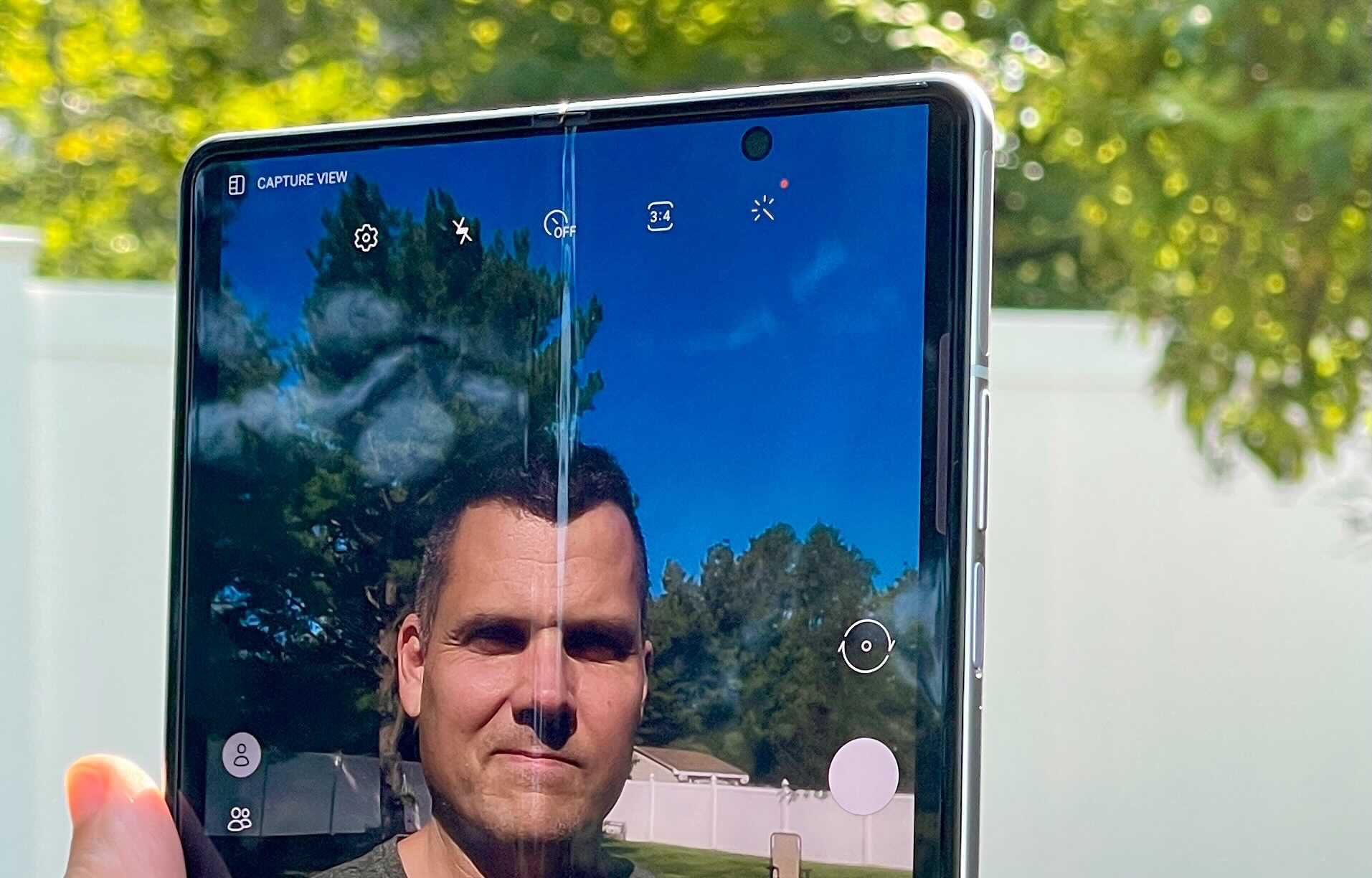The under-display camera revolution is off to a crappy start
I don't think under-display cameras are going to become mainstream any time soon

Update: For the best under-display camera, the ZTE Axon 40 Ultra is the one to go for as we discovered.
In terms of cutting-edge smartphone tech, under-display cameras are probably the biggest unexplored frontier right now. With foldable phone designs finally becoming more refined, getting cameras to work from beneath the screen is the next challenge for smartphone companies' R&D teams to get right.
Because based on the under-display cameras currently available, they haven't really got there yet.
The uptake of the technology is gaining speed. The Samsung Galaxy Z Fold 3 features an under-display camera under its main 7.6-inch display, and the newly released ZTE Axon 30 5G features ZTE's second attempt at one, after making the first-ever under-display camera phone with last year's Axon 20.
- ZTE Axon 30 5G review: the best under-display camera phone so far
- Check out the best Android phones currently on sale
More under-display cameras are rumored for 2022, with devices like the Galaxy S22 rumored to add the feature. Clearly, we're at the start of a revolution in front-facing phone cameras, but as things stand, these sub-screen sensors are in no position to become the next default feature on phones.
Under-display cameras: Performance problems
One thing I'll concede to these under-display camera phones is that they've got the displays almost spot on. The hidden lens may be more noticeable on the Galaxy Z Fold 3, but the Axon 30 successfully gives the illusion of a seamless display almost all of the time. You'll see the lens if you look closely, and particularly if you've got a bright white screen, but for everyday use you've basically got an unimpeded display to enjoy whenever you like.
Unfortunately the camera part of under-display cameras is where the dream falls apart. Selfie cameras are one of the most unique parts of smartphones — indeed the term was created because of them. I'm not a huge selfie taker, but even I appreciate the images looking nice and crisp when I do take one. And that's not what happens with under-display camera right now.
Sign up to get the BEST of Tom's Guide direct to your inbox.
Get instant access to breaking news, the hottest reviews, great deals and helpful tips.
The phone's software, trying to account for the screen in the way of the phone, can't quite handle bright sources of light properly, a stumbling block that spoils both outdoor and indoor shots.
You can see this in this selfie photo comparison from our Axon 30 review. The Samsung Galaxy A52 5G and its standard front camera house in a cutout doesn't produce incredible selfies in a vacuum, but just looking at the coloring of the scene and the detail the ZTE loses in the leaves in the background, it's obvious which phone offer the better self-portraits.
It's not that I'm trashing under-display cameras completely; I'd still rather take a selfie or make a video call on the Axon 30 that I would on an older phone with a normal front camera. However, with photography being one of the most competitive aspects of the smartphone market, any phone that currently offers under-display cameras immediately puts itself at a disadvantage.
That's not such a problem with the Z Fold 3 as it's also got a front camera on the external cover display, but for the ZTE Axon 30, its signature feature is also a significant weakness. Even so, when my colleague Mark Spoonauer tested the Galaxy Z Fold 3 under-display camera, he was disappointed by the images it produced.
What's next for under-display cameras?
So the revolution isn't quite here yet, but that's fine with me for now. As much as I want to enjoy seamless displays, I can accept that watching video and gaming on a phone is going to have some caveats, such as a punch-hole or a notch. It's a small price to pay for having a whole movie, TV boxset and gaming library in your pocket.
As it stands, I think there's one kind of phone that could benefit from under-display cameras right now — gaming phones. The best gaming phones already make photography take a backseat compared to the display or other features directly related to the play experience. I think that the successors to the Asus ROG Phone 5 or the RedMagic 6 would do well to ditch the old-fashioned top bezel and implement an under-display camera. They're aimed at a niche market where the issues with selfies I described earlier aren't that important at all.
As for the future, I look forward to seeing where under-display sensors go next. I don't believe it's a dead-end, at least not for the time being. However I wouldn't blame the biggest phone companies around from avoiding this futuristic camera tech on their mainstream phones for another couple of years. iPhones and Galaxy S devices deserve proper under-display cameras, not the current under-developed ones.

Richard is based in London, covering news, reviews and how-tos for phones, tablets, gaming, and whatever else people need advice on. Following on from his MA in Magazine Journalism at the University of Sheffield, he's also written for WIRED U.K., The Register and Creative Bloq. When not at work, he's likely thinking about how to brew the perfect cup of specialty coffee.
-
b1s Dude. There was an elephant im the room and you didn't even mention it. I rate this article 4 /10Reply
